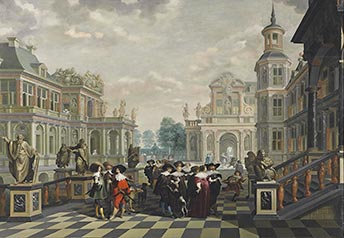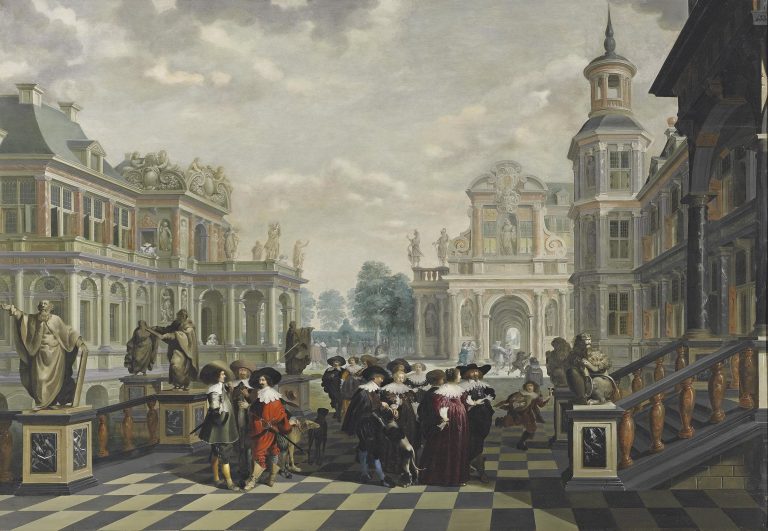Dirck van Delen
An Architectural Fantasy
Dirck van Delen (Heusden ca 1605 – 1671 Arnemuiden)
Oil on panel
116.5 by 166.7 cm; 45 ⅞ by 65 ⅝ inch
Amongst van Delen’s most elaborate and successful compositions, this splendid palace courtyard has been dated by Blade (see Literature) to the mid 1630s. Rivalled by only a handful of paintings for the opulence of its baroque architectural setting, the scene is lent further splendour by the skilfully executed throng of well-dressed figures, painted by Anthonie Palamedesz, that populate the central foreground. Palamedesz provided the figures for a number of van Delen’s best works, including the Architectural Fantasy, in the National Gallery, London (dated 1634), the Great Garden Palace in the Kunsthistorisches Museum, Vienna (dated 1640) and the 1641 dated Palace exterior in the Niedersächsische Landesgalerie, Hanover’. In several other works Palmedesz’ figures themselves become the focus of the painting, filling the majority of the picture plane, and van Delen’s setting is relegated to a supporting role; see, for example, the Musical company in a palace interior in the Boijmans van Beuningen Museum, Rotterdam.
This type of finely executed painting, representing a fanciful architectural setting, carefully constructed according to perspectival rules and populated with very elegantly dressed people, was probably painted for aristocratic and courtly patrons connected with the Court of Orange in the Netherlands. Van Delen painted imaginary architecture, particularly church interiors and palaces, in a style influenced by that of Hendrick van Steenwyck the Younger (died 1649) and was the most important inspirational force to succeeding architectural painters in Antwerp.
Literature
Timothy T. Blade: The Paintings of Dirck van Delen; dissertation, University of Minnesota 1976, p. 250, cat. no. 102, reproduced fig. 144.







